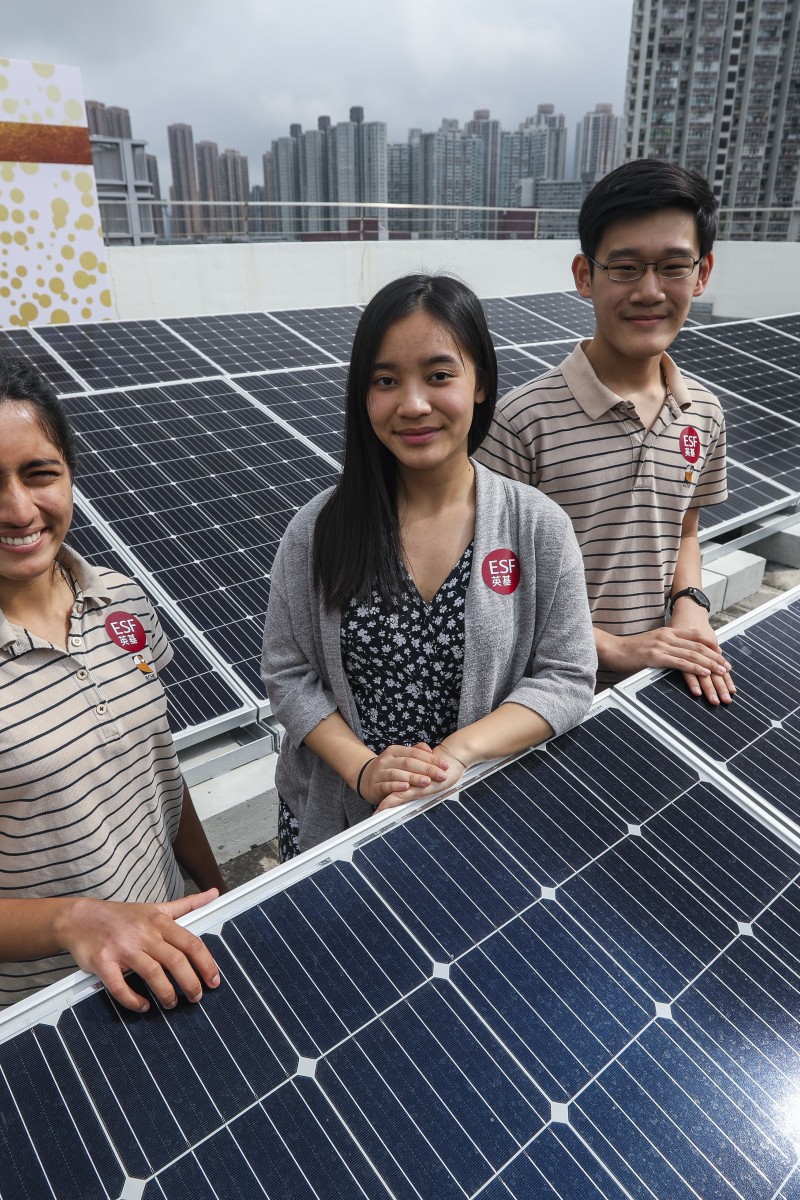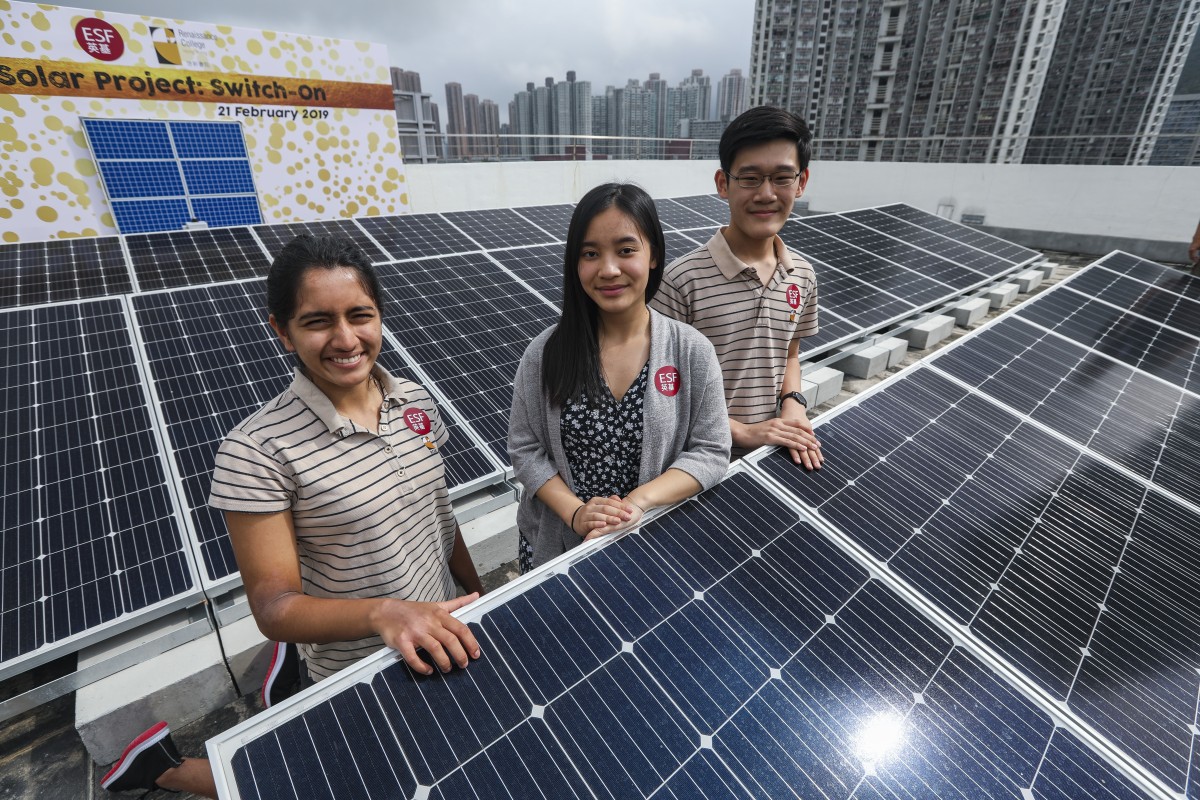
The challenges and rewards of powering a whole school with renewable solar energy
A 16-year-old Renaissance College student leads the way as renewable energy project brings in money for Renaissance and contractor
 (From left) Ankita Joshi, Jane Chan, and Taylor Chung on the rooftop where the solar panels have been installed.
(From left) Ankita Joshi, Jane Chan, and Taylor Chung on the rooftop where the solar panels have been installed. Renaissance College started producing electricity using their own solar panels last Friday. A total of 32 large solar panels have been fitted to the roof of the school.
It all started when Jane Chan, a 16-year-old student, had an idea to install solar panels on the school’s roof to feed clean, renewable energy into the public grid – and get paid for it. After 18 months, the system was finally hooked up.
The 32-panel system can churn out about 30 to 40 kilowatt-hours on a cloudy day – enough to power 770 light bulbs for up to eight hours – and even more when the sun is out.
This solar-powered electric car by an IVE team makes helping the planet look so cool
“I had two criteria for my project. First, it had to create real and tangible change. I didn’t want to just waste my time on something that wouldn’t benefit the community,” the Year 12 student, a member of the school’s sustainability club, said. “Second, to commit to a cause greater than one’s own individual wants and needs.”
Renaissance has become the first institution from the English Schools Foundation (ESF) to receive “feed-in tariffs”. Under a new scheme launched by the city’s two power suppliers, homes, businesses or institutions with rooftop solar panels can sell the clean electricity to the power grid at above market rates. The school has joined CLP’s HK$5/kWh feed-in tariff plan. With that, the school expects to rake in HK$50,000 in revenue per year, and will split the profits with its contractor.
CLP is powering up the next generation of engineers in Hong Kong
One of the challenges for Jane was that she had to look for people who were willing to fund the project, while juggling exams and classes.
“People told me things like ‘Don’t expect too much’,” Jane, who wants to study international affairs and climate policy at university, said. “But they were proven wrong on all fronts.” Eventually, she found a contractor, EcoSmart, which agreed to fund, finance and maintain the system until the HK$260,000 investment is recouped, in an estimated five years. The company will take an 85 per cent cut of the profit, and the school will get 15 per cent.
“As for future plans, the facilities team at our school can learn from our supplier on how to care for the panels, passing it onto other ESF schools who are now considering following similar projects,” said Jane.
